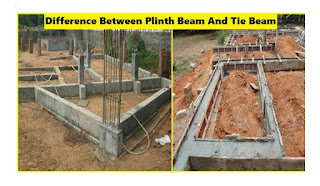Types Of Sand Used In Construction Works
What Is Sand?
Sand is a material obtained naturally from the locations like rivers, seas, beaches, and desserts. Sand is a granular material which consists of particles of finely divided rock. The major and the most common component of sand is silica (Si02 or Silicon dioxide), found usually in the form of quartz. Sand, consisting of tiny particles, is formed by the weathering of rocks. In this article, we will briefly discuss different types of sand used in construction.
Usually, the major source of sand is river, sea, etc. from where the sand can be obtained naturally. Other than such natural sources of sand, it can also be manufactured artificially, about which we will further learn in detail.
Particles of sand are coarser than silt and finer than gravels. So, according to the Bureau of Indian Standards (BIS), earlier known as the Indian Standard Institution (ISI), the size of sand particles ranges from 0.075 mm to 4.75 mm.
Based on the size of sand particles, it is further subdivided into fine sand, medium sand, and coarse sand. The size range of fine sand, medium sand, and coarse sand is as given in the table below:
Sand is classified into different categories, based on the size of the particles of sand, color of sand, shape of particle of sand, structure of sand, location of availability of sand, texture of sand, etc. But officially there is no classification of sand.
We will learn about some of the major types of sand, below in detail, which is extensively used in construction work. Different types of sand are as follows:-
• River sand
• Concrete sand
• Pit sand
• M - sand
• Fill sand
• Utility sand
River Sand Or Natural Sand
River sand is naturally occurring sand obtained from the banks of river. It is the most widely used type of sand for construction. River sand is fine particle sand. It has a smooth texture. So it is used for plaster works where a smooth finish is required and also used for RCC works.
The color of river sand is whitish- grey type. Due to the smooth and fine texture, this sand makes a good bond with cement, aggregates, and water to form concrete. The river sand is extensively used for construction purposes since the river sand is cheaper in terms of cost as it is obtained naturally.
Concrete Sand
The name itself indicates that the concrete sand is made up of crushed concrete particles. This type of sand is generally used in concrete works. Concrete sand provides strength and stability to a building.
The concrete fragments are crushed and the larger particles in the mixture are removed to make the mixture feasible for use. The concrete sand is used widely to level the base for layers, patios, and walking paths. The concrete sand usually consists of fine particles. So it is also used to fill up the voids between coarse aggregates.
Pit Sand
Pit sand is a type of naturally occurred sand which is obtained from the pits into the soil, at a depth of 2 to 4 meter below the level of the ground. The particles of pit sand are coaster than other types of sand. So before using, the pit sand is screened properly so that the unwanted particles from the sand are removed.
The pit sand is generally used for mortars. Due to the presence of iron - oxide in it, the pit sand appears to be of red-orange color.
M - Sand or Artificial Sand
M - Sand is the short name for “Manufactured Sand". This is artificial sand, manufactured in the factory itself. Due to the increase in demand for good quality sand, the quantity of naturally occurring sand is decreased day by day. So to compensate for the increasing demand & shortage of naturally occurring sand, artificial sand is manufactured.
As M – Sand is artificially prepared, it has some advantages over the naturally occurring sand such as:
i) The cost of transportation of sand from the river banks to the construction site is eliminated.
ii) It is free from impurities and unwanted particles.
iii) Better quality of material obtained due to its manufacturing under a controlled environment.
Fill Sand
Fill sand is mainly used for filling. Fill sand is a mixture of fine particles of sand and aggregates. This type of sand can be used for several purposes during the construction work as the fill sand possess excellent properties of compaction.
Fill sand can also be utilized as a base material for the activities like laying the concrete, paving, and filling large holes. The fill sand is also known as utility sand. Like pit sand, the fill sand or utility sand is also composed of coarse particles. The size of its particles is relatively larger.
Utility Sand
Utility sand is a type of artificial sand manufactured from high quality industrial quartz. This sand provides excellent compaction and superior mechanical properties due to their uniform grain shapes. It can be suitably used in corrosive environments since they are non- reactive.
Quality Of Good Sand
Good quality sand should have the following properties:
i) The sand should be thick and granular.
ii) The particles of sand should be hard, strong and long lasting.
iii) The sand should be free of dust, clay and dirt.
iv) Sand should not contain salts and organic matter.
v) The size of sand particles should not be same but should be thick and fine.
vi) Sand should not contain any water-absorbing ingredients.
So these are some best and majorly used types of sand used in construction. It is always important to choose right construction sand to build strong and durable structure. While selecting one should consider the above factors.










Comments
Post a Comment